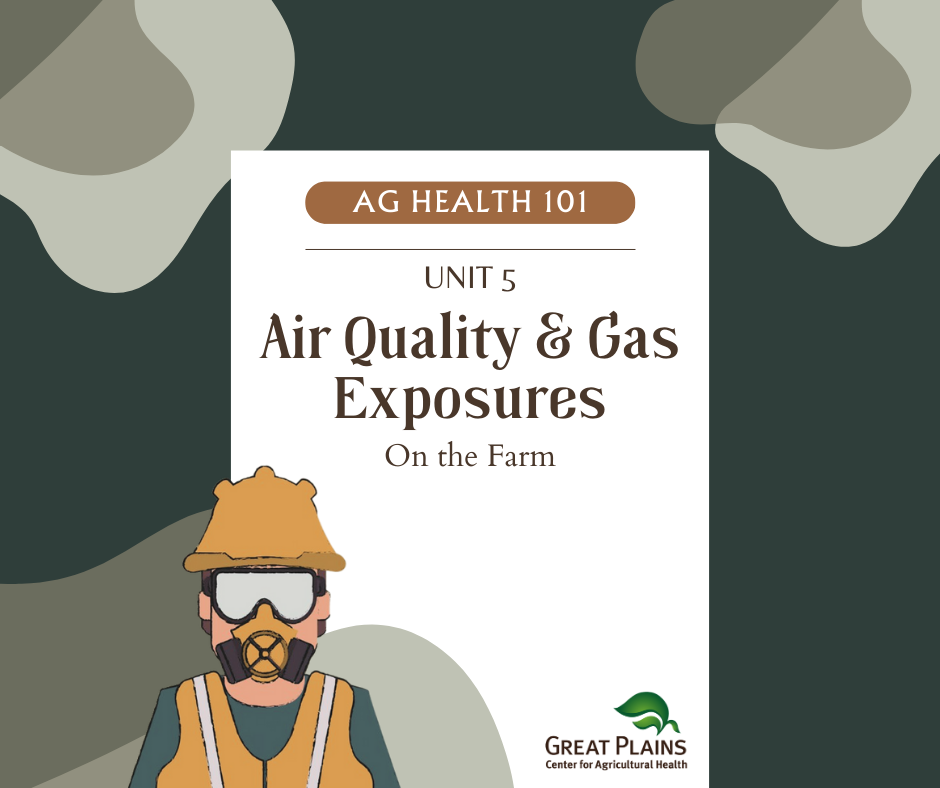
Unit 5.
Air Quality & Gas Exposures on the Farm
This section of our conversations on Ag Health 101 will focus on different airborne contaminants that are generated by farming operations.
Note that we will discuss exposures to pesticides and other agrichemical exposures in a different section, because we have more than just air quality concerns for these products. In this section, we will focus on gases and particle exposures and health concerns associated with them.
Note: After completing this unit, we recommend completing Unit 6: Confined Spaces to fully understand health protection measures.
Chapter 1: Introduction
This chapter begins our conversation about air contaminants that are generated by farming operations. We introduce them and talk about where they might be found, before we dig into specifics in next chapters.
Introduction to Air Quality & Gas Exposures
Chapter 2: Carbon Monoxide (CO)
In this chapter listeners will learn about the hazards of CO, where we might find CO on the farm, and prevention methods – which include information on how to use CO monitors.
Carbon Monoxide
Chapter 3: Carbon Dioxide (CO2)
In this chapter we will review the hazards of CO2 on the farm and where it is found. While CO2 has less serious health effects than CO, it is important to understand about controlling this in livestock operations.
Carbon Dioxide
Chapter 4: Nitrogen Dioxide (NO2)
On the midwestern farm, we only find NO2 in silos when we are fermenting and storing silage for animal feed. In this chapter, learn about hazards and best practices to minimize exposures to this deadly gas.
Nitrogen Dioxide
Chapter 5: Ammonia (NH3)
Ammonia occurs in several forms on the farm, both as anhydrous ammonia, applied to the land as nutrient, or as a byproduct in livestock operations. Learn about hazards and precautions of each in this chapter.
Ammonia
Chapter 6: Manure Gases – Methane (CH4)
Methane is a natural byproduct of livestock production operations. Learn about sources and hazards, including explosions and foaming manure, in this chapter.
Manure Gases - Methane
Chapter 7: Manure Gases – Hydrogen Sulfide (H2S)
Hydrogen sulfide is smelly at low concentrations, but as more of it gets into the air, it becomes deadly. This chapter provides information on the health hazards and prevention tips to minimize exposures to lethal concentrations of H2S.
Manure Gases - Hydrogen Sulfide
Chapter 8: Organic Dusts
In this chapter, learn about a variety of health effects associated with different dusts on the farm are explored, along with recommended practices.
